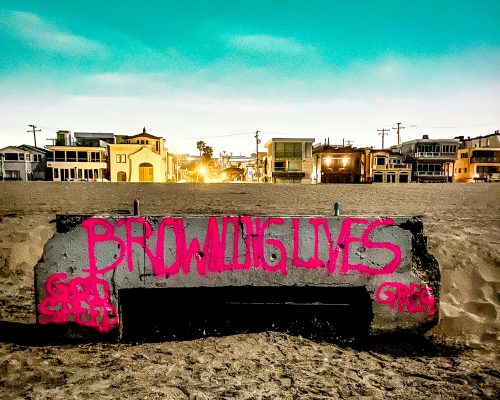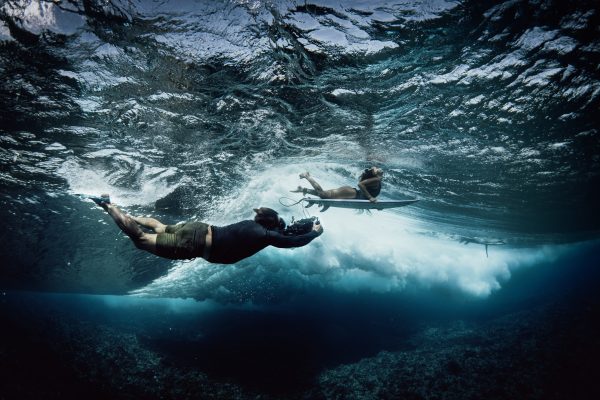
A 20,840 square foot shopping mall and “eco-friendly” carwash proposed at 901 N. Catalina Avenue has been appealed to the City Council after gaining approval from the Planning Commission two weeks ago.
On Monday Metropolitan Investments, the owners of the neighboring Redondo Beach Information Technology Center, filed a formal notice of appeal that argued that the project’s environmental impacts – including drainage, traffic, and noise issues – had not been appropriately studied. Additionally, the appeal argues that a tree believed to be one of the oldest in the city, a century-old eucalyptus tree that sits astride the equally historic Cannery Row Studios, was not adequately protected by the Planning Commission’s approval.
“We believe additional environmental review is necessary to better understand these environmental issues,” wrote Byung Cho, a representative from Metropolitan Investments, in the appeal letter. “The potential of flooding, noise impacts, traffic impacts and impacts on the tree need to be further analyzed. There are clearly significant unmitigated impacts from the project.”
The Planning Commission approved the project in a 3-1 vote at its Aug. 25 meeting. A similar project, minus the carwash, was approved by the commission in 2009 but never came to fruition as the long-vacant property once again was put up for sale. Two Torrance-based firms, Greenstreet Development and the Ashai Design Group, put together the new proposal.
Bill Kahale, Greenstreet’s director of development, told the commission that the concept was to build a high-end retail complex that would include a health spa and possibly a coffee shop and bakery that would cater to customers waiting for their cars to be serviced at a carwash that would utilized recycle water and specialize in steam-cleaning.
“We prefer to call it an auto spa,” Kahale said.
Architect Tony Ashai said the proposal did not significantly differ from the one approved in 2009.
“We have basically looked at the old project you approved,” Ashai said. “Our goal was not to exceed the project you already approved.”
The planning staff’s report noted a few differences – including a two-story subterranean parking garage with 123 spaces, as opposed to surface parking for 80 cars in the 2009 proposal – but enthusiastically recommended its approval.
“This project is determined to be of a significant importance towards accomplishing major revitalization efforts for the ‘Catalina Corridor,’” the report concluded.
Public opposition at the Planning Commission’s public hearing focused mainly on the tree. The project site is located on an unusual U-shaped property that wraps around Cannery Row Studios, an art gallery that is housed in 106-year-old building that was a lumberyard in the early decades of the city’s history.
Resident Bev Morse said that she and her husband recently moved from Manhattan Beach to Redondo Beach in part because of the city’s trees and its sense of history. She questioned how any project that endangered a tree of such magnitude and history could be considered “eco-friendly.”
“I urge the city and developer not to damage the roots, to save that tree,” said Morse [editor’s note: Morse is a part-time employee of Easy Reader]. “If this is truly a green project…I think it is incumbent upon the city and developer to protect that tree at all costs.”
Commissioner Nicholas Biro questioned why the tree had suddenly become an issue.
“I guess this tree was here last year when we approved this other project,” Biro said. “I don’t remember it being an issue.”
The tree is actually on city property that abuts both the Cannery Row and Greenstreet properties. Ashai said that the nearest proposed building would be 20 feet away and said the design could be altered to distance it slightly further. But in addition to the buildings, the project will also require extension of Francisca Avenue through the parking lot area between Cannery Row and the Tech Center. The car wash component of the project would be located behind Cannery Row while the retail mall would face Catalina Ave.

City planning director Aaron Jones said it was difficult to ascertain how far out the tree’s root structure extends. He said the city’s arborist would study the matter.
“Every effort will be made to save this tree,” Jones said. “I cannot promise this evening that will be 100 percent assured, though.”
Commissioner Douglas Kim expressed unease at the “mitigated negative declaration” attached to the staff report – essentially, the initial environmental study that allowed the developers to declare that the environmental impacts are not great enough to demand a full study as required under the California Environmental Quality Act (CEQA), a much lengthier and more costly process.
“It’s not often that I feel this way, but I don’t feel I have enough information in that initial study to determine traffic impacts and the impacts on the tree,” Kim said.
Kim said that the staff report did not include the developers’ full traffic analysis, and what little data it did include contained contradictory numbers.
According to the staff report, the project would generate 764 daily car trips, with 24 trips occurring in the a.m. peak hour and 131 in the p.m. peak hour. An estimated 58 new trips are projected to cross the intersection of Gertruda Ave. and Catalina Ave., a change in volume the traffic analysis says is less than a 1 percent change. Kim noted that this would indicate that the intersection’s current capacity is 5,800 car trips, which is implausible.
“So the impact has to be more than 1 percent,” Kim said. “I believe the study was done by a good traffic engineer, but those traffic numbers don’t add up.”
Kahale said that the traffic numbers would be less than projected in the report. He said the high-end estimate would be 500 cars a day.
“That 500 would be very unlikely,” he said. “Some of the more popular carwashes on PCH on their best days do only 400, on a Saturday…I’m thinking something in the low hundreds would probably be a more realistic number.”
Jones ultimately urged the commission to approve the project with the stipulation that the tree would be saved “if feasible.” Only Kim voted in opposition. Afterwards, Kim said the vote only appeared to protect the tree.
“It looks like we protected it because we added that language,” he said. “Well, no, not really – the devil is in the details. I didn’t want to sacrifice that tree to this project.
The Tech Center appeal also questioned the “if feasible” stipulation. “We find the condition quite vague and deficient,” Cho wrote.
The appeal will be heard by the City Council at a date that has not yet been specified. ER








